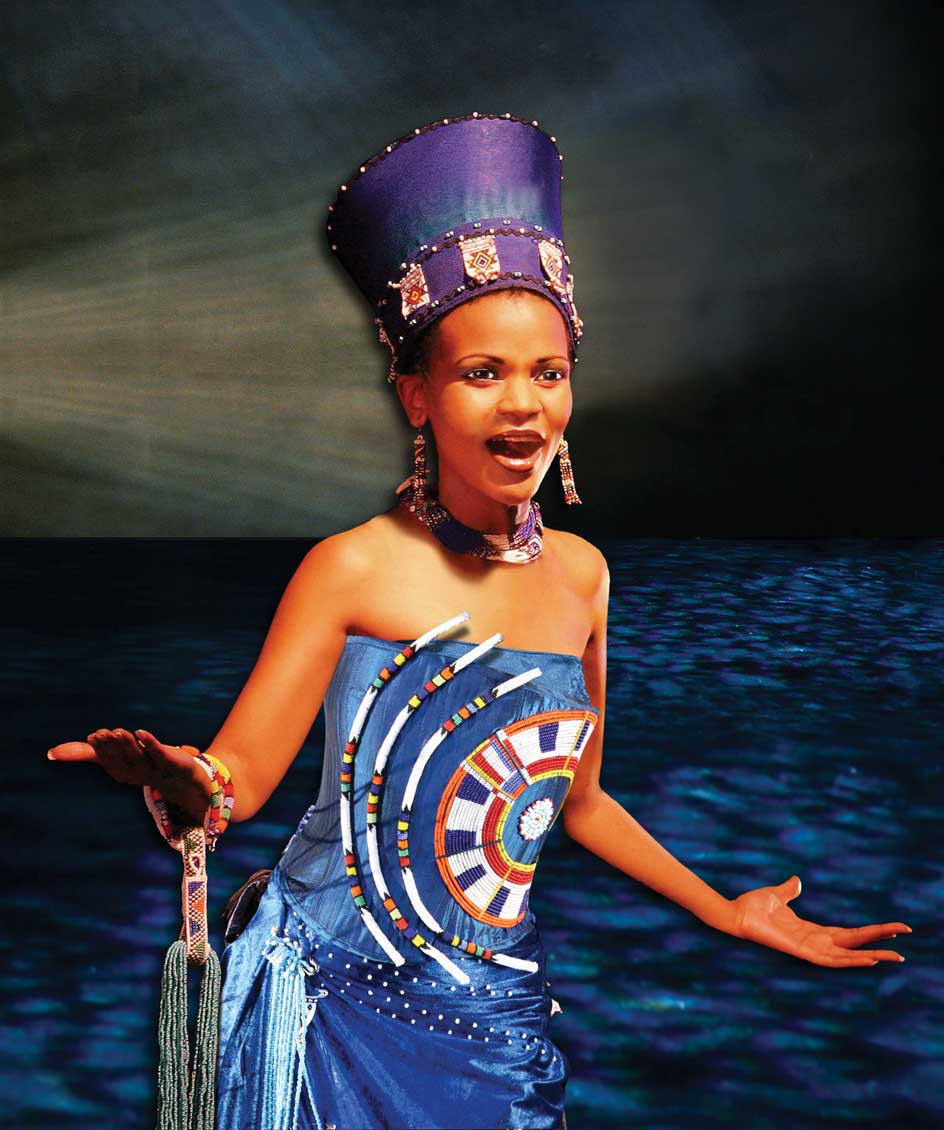
This week, the Sony Centre for the Performing Arts will host African Footprint, South Africa’s longest-running show, seen by over 250 million people. This diverse and dynamic group of 30 singers, dancers, and drummers, largely from Soweto, was originally put together in 1998 by British-born South African performer and producer Richard Loring.
As the North American tour’s presenter Corey Ross explained to AfroToronto.com, African Footprint arrives in Toronto following triumphant show dates in New Orleans and New York. African Footprint had the distinction of being the first international show in New Orleans since Katrina. “Despite the fact that the floor was warped by the flood and electricity was intermittent, they did a fantastic performance,” he says. They also received a lot of media coverage and celebrity attention. “The first thing they did when we arrived in New Orleans is that they stopped traffic, and they threw a parade for African Footprint,” Ross adds.
African Footprint first caught international attention just over a year after the original group of 30 performers began intensive vocal and dance classes. In 1999, the group was invited to perform on Robben Island before Nelson Mandela for the Millennial Festivities on New Year's Eve. Following this groundbreaking performance broadcast around the world, African Footprint went on to play for seven years in South Africa, tour for two and a half years in Europe, and perform many times in Australia, China, Israel, and India.
AfroToronto.com had the opportunity to speak one-on-one with a few of the show’s truly talented performers. For the electrifying drummer Shana Kokwane, traveling the world and bonding with the entire cast, which hails from different cultural and linguistic groups, has been a life-altering experience. “I’ve met a lot of celebrities; I think this is fun!” he says.
As the consul of South Africa in Canada, Ms. NF Nojozi expressed to AfroToronto.com that the warmth, excitement and generosity of spirit exhibited by African Footprint’s cast is a genuine reflection of her country’s cultural fabric. Speaking of the rousing drumbeats and choreography, Ms Nojozi says: “It is something unique to our African culture and to our African past. The rhythm. The South African drum. In Ms. NF Nojozi's view, culture is a peaceful weapon that South Africans use to greatly affect and share part of who they are with the world.
However, there is definitely something unique and even, at times, controversial with the concept of African Footprint. That is to say, the decidedly multicultural aspect of the production. It is, in fact, a marriage of African and European styles of choreography and music. Richard Loring looked to white choreographer Debbie Rakusin and black choreographer David Matamela, who already had an established working relationship, to bring the two traditions together on stage as seamlessly as possible. In speaking about the particularities of also working with a multi-racial body of performers, David Matamela says that some of the white cast had more difficulty with the traditional African dance rhythms. But before long, white and black cast members found a remarkable chemistry.
When I asked the South African cast members how they dealt with the varying perceptions of an African show presented by a largely white team of producers, Dance Captain Zakhele Tham’sanqa Nkosi eloquently replies:
“The concept of African Footprint (the show) is that it celebrates the cultural diversity there back home. Sometimes, when you go to other places, they say that it’s a show of black and white people. And some people will ask the question, are there white people in Africa? … People have their own different views of what Africa is. …
The show wasn’t created by Richard by himself. He came up with the concept and the idea. But the show had been created by a number of people. Both black and white. Often, people look at who owns the show … oh it’s a white man, okay, fine. Why would a white man do an African show? We’ve had all these questions … we have experienced those things. But moaning about it, pointing fingers about it [does not serve anything].”
Making an analogy about his heart that could beat just as well in his body as in a white man’s body, Nkosi makes the argument that we are all one human race. He further buttresses his argument by referring to the great migration of people from the south of Africa to populate the centre, the north and the rest of the world. “If you look at the continent of Africa, it is shaped like a foot - hence the show African Footprint.” In Zakhele Tham’sanqa Nkosi’s view, African culture is thus a universal culture.
African Footprint is a show not to be missed.
DETAILS
Dates: Feb. 7-9, 2008. Visit www.sonycentre.ca for a full performance schedule.
Location: Sony Centre for the Performing Arts (formerly The Hummingbird Centre for the Performing Arts) - 1 Front St. E., Toronto, Ontario
Tickets: $27.50-$82.50 plus applicable service charges
On sale NOW – visit www.sonycentre.ca for schedule and pricing details
GROUPS of 10 or more call Group Entertainment at 416-393-7463,
Toll-free: 1-866-737-0805 or by email:

